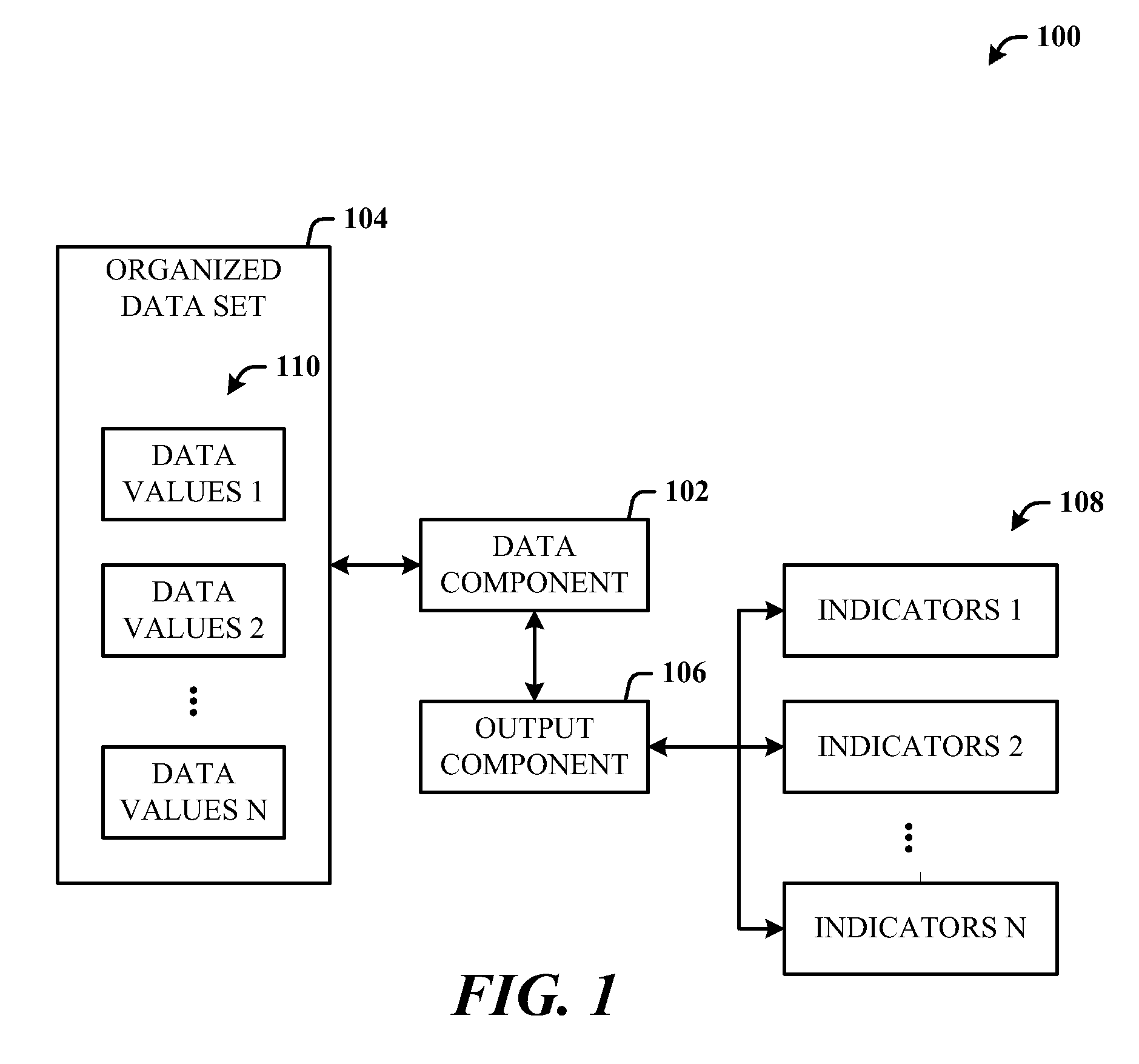Sensory outputs for communicating data values
a technology of data values and sensory outputs, applied in the direction of repeater circuits, instruments, tactile signalling systems, etc., can solve the problems of visual impairment, difficulty in operating in the contemporary society of visually impaired persons, and a measure of eye sigh
- Summary
- Abstract
- Description
- Claims
- Application Information
AI Technical Summary
Benefits of technology
Problems solved by technology
Method used
Image
Examples
Embodiment Construction
[0019]The disclosed architecture facilitates the communication of data values to visually-impaired users by generating for perception non-image indicators that correspond to the data values. For example, an organized data set such as a chart, a table, or a graph can be displayed on a computer monitor or other user interface output component. A user employs a mouse or other user input mechanism (e.g., cursor movement using a keyboard) to select a data value from the organized data set. One technique for more selective control of high density data points can be to allow the user to select a vertical line that extends the vertical limits of the chart, and which can be moved left or right along the x-axis of a graph, for example, such that the vertical line intersects each data point in a line or curve in the graph. In response thereto, a non-image indicator or signal such as an audible tone is generated that corresponds to the intersecting data point based on the corresponding data val...
PUM
 Login to View More
Login to View More Abstract
Description
Claims
Application Information
 Login to View More
Login to View More - R&D
- Intellectual Property
- Life Sciences
- Materials
- Tech Scout
- Unparalleled Data Quality
- Higher Quality Content
- 60% Fewer Hallucinations
Browse by: Latest US Patents, China's latest patents, Technical Efficacy Thesaurus, Application Domain, Technology Topic, Popular Technical Reports.
© 2025 PatSnap. All rights reserved.Legal|Privacy policy|Modern Slavery Act Transparency Statement|Sitemap|About US| Contact US: help@patsnap.com



